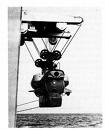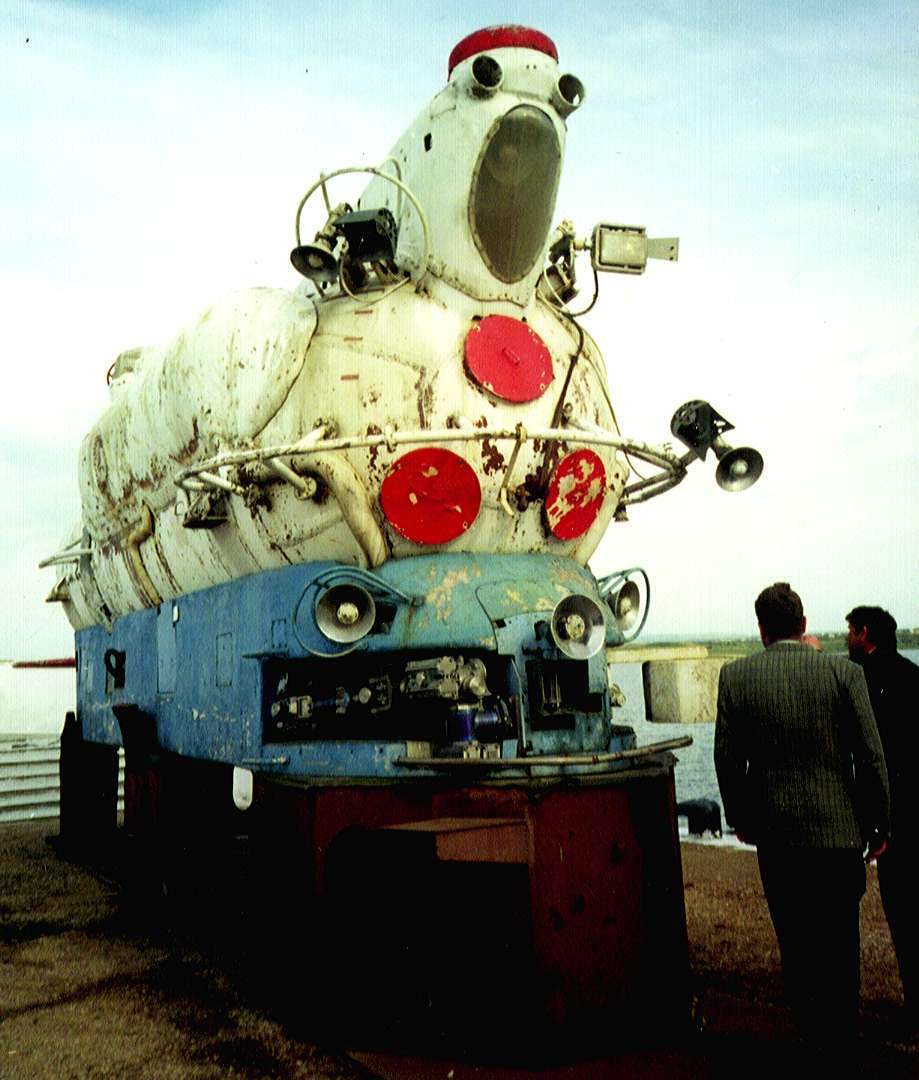|
Ukraine`s (ex USSR) submersibles
When Ukraine was separated from the USSR it took part of the Soviet`s fleet of research submersibles and supporting ships.
The Mariecoprom Scientific Industrial Association, located in Sevastopol, is the operating arm of the Ukrainian Academy of Science. The association operates a fleet of research vessels and manned submersibles for various institutions of the academy to carry out oceanographic and geological studies. It operates ten submersibles and nine support ships, most of which are converted fishing vessels varying in size from 1,200 tons to 4,000 tons. The current undersea interests of Mariecoprom are centered in the Ukrainian portions of the Black Sea. Mariecoprom does not operate unmanned vehicles. The submersibles operated by Mariecoprom vary in size and capability from the very large twelve-person Benthos-300 to the small, towed, three-person Tetis-H. The submersibles operated by Mariecoprom are: Sever-2, Sever-2 Bis, Benthos-300, Omar, Langust, Tinro-2, Tetis-H, and Rif.
Technical specifications, Tinro-2:
Weight in air (lb/kg): 23,150/10,500
Payload in air (kg): 200
Dimensions (L*W*H feet/meter): 23`4*8`2*8`10/7.11*2.49*2.71
Propulsion: 1*main electric motor, thrusters?, all battery storage operated, one main propeller
Speed (sub/knots): 2.7
Range (sub n/miles@knots): 6 hours operational time
Diving depth (feet/meter): 1,310/400
Complement: 1 pilot, 1 researcher
Construction:.
1*manipulator, 7 degree of freedom, 3*portholes 140mm in diameter located in front and 3*60mm portholes along the sides of the hull
Sever-2
 The Ukrainians operates two Sever-2 class manned submersibles. One Server-2 was built in 1972 and supported by the Ikhtiander, andSever-2 Bis, 1976 supported by. They support a crew of five for a submerged duration of about six hours at depths to 2,000 m, with a payload of 500 kg. Design and level of sophistication of Sever-2 is a simple manual controls and a magnetic compass for navigation, geodetic navigation, and position are tracked from the surface using acoustic long baseline transponders. View ports and external lights are used instead of video systems for all operations, including the use of manipulators. It has a roomy forward observation sphere for three people, with the two pilots seated at side-by-side consoles aft of the observation sphere. Piloting at the maximum forward speed of three knots is aided by forward looking sonar, but all controls are manual, with no indication of closed loop computer controls and no remote video systems. The Ukrainians operates two Sever-2 class manned submersibles. One Server-2 was built in 1972 and supported by the Ikhtiander, andSever-2 Bis, 1976 supported by. They support a crew of five for a submerged duration of about six hours at depths to 2,000 m, with a payload of 500 kg. Design and level of sophistication of Sever-2 is a simple manual controls and a magnetic compass for navigation, geodetic navigation, and position are tracked from the surface using acoustic long baseline transponders. View ports and external lights are used instead of video systems for all operations, including the use of manipulators. It has a roomy forward observation sphere for three people, with the two pilots seated at side-by-side consoles aft of the observation sphere. Piloting at the maximum forward speed of three knots is aided by forward looking sonar, but all controls are manual, with no indication of closed loop computer controls and no remote video systems.
Technical specifications, Sever-2:
Weight in air (lb/kg): 85,315/38,700
Payload in air (kg): 500
Dimensions (L*W*H feet/meter): 39`5*8,8*26`5/12.0*2.64*4.05
Propulsion: 1*main electric motor,2*thrusters, all battery storage operated, one main propeller
Speed (sub/knots): 3
Range (sub n/miles@knots): 6 hours operational time
Diving depth (feet/meter): 6,560/2,00
Complement: 2 pilots, 3 researchers
Construction:.
2*manipulator, 7 degree of freedom, 3*portholes 140mm in diameter located in front and 4*60mm portholes along the sides of the hull.
Back to History Index
 |
USSR - Soviet Union |
1990 |
Tinro-2 |
 |
USSR - Soviet Union |
1990 |
Sever-2 |
|